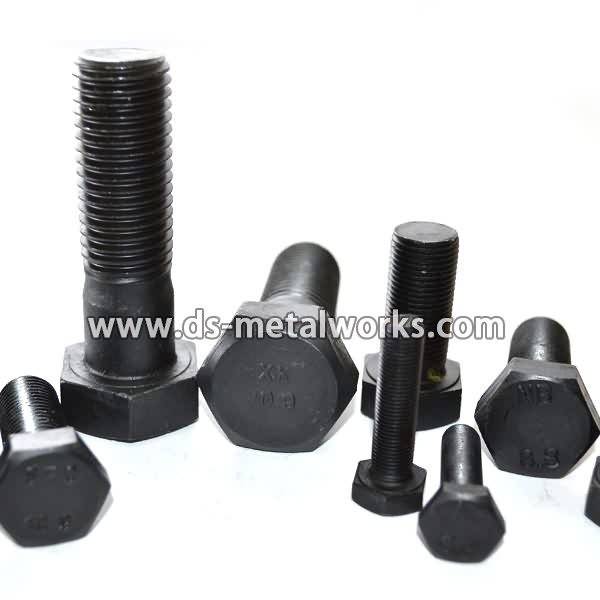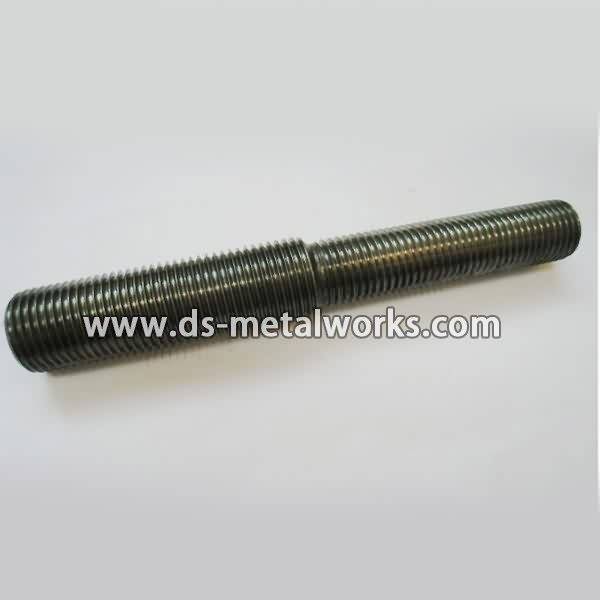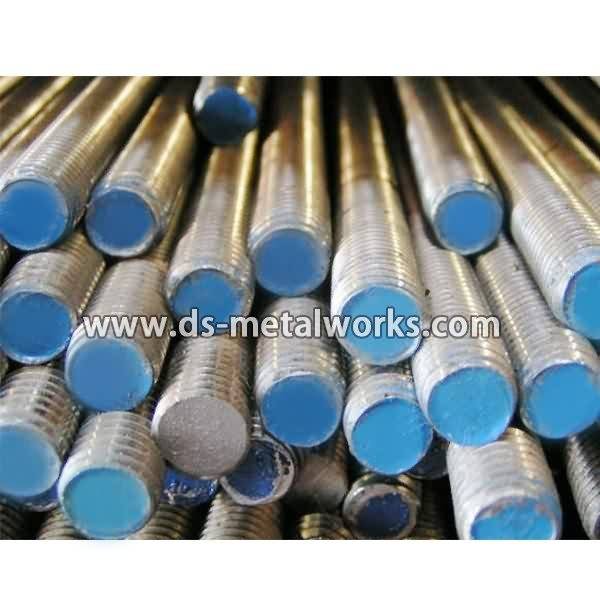2 Years’ Warranty for DIN933 Din609 ISO4017 JIS1180 Metric Hex Head Bolts for Oman Manufacturer
Short Description:
Metric Size Hex Head Bolts Hex Cap Screws Hex Fit Bolts Standard: DIN931, DIN933, DIN960, DIN961, DIN558, DIN601, DIN609, DIN610 ISO4014, ISO4017, ISO8765, ISO8676,BS4190, BS3692, UNI5739, UNI5740, JIS1180 Thread Size: M5-M80 with various lengths Class: ISO 898-1 class 4.6, 4.8, 5.6, 5.8, 6.8, 8.8, 10.9, 12.9 Finish: Black Oxide, Zinc Plated, Hot Dip Galvanized, Dacromet, and so on Packing: Bulk about 25 kgs each carton, 36 cartons each pallet Advantage: High Quality and Strict Quality Contro...
Product Detail
Product Tags
2 Years’ Warranty for DIN933 Din609 ISO4017 JIS1180 Metric Hex Head Bolts for Oman Manufacturer Detail:
Metric Size Hex Head Bolts Hex Cap Screws Hex Fit Bolts
Standard: DIN931, DIN933, DIN960, DIN961, DIN558, DIN601, DIN609, DIN610
ISO4014, ISO4017, ISO8765, ISO8676,BS4190, BS3692, UNI5739, UNI5740, JIS1180
Thread Size: M5-M80 with various lengths
Class: ISO 898-1 class 4.6, 4.8, 5.6, 5.8, 6.8, 8.8, 10.9, 12.9
Finish: Black Oxide, Zinc Plated, Hot Dip Galvanized, Dacromet, and so on
Packing: Bulk about 25 kgs each carton, 36 cartons each pallet
Advantage: High Quality and Strict Quality Control, Competitive price,Timely delivery; Technical support, Supply Test Reports
Please feel free to contact us for more details.
Product detail pictures:


We have many excellent staff members good at marketing, QC, and dealing with kinds of troublesome problem in the production process for 2 Years’ Warranty for DIN933 Din609 ISO4017 JIS1180 Metric Hex Head Bolts for Oman Manufacturer, The product will supply to all over the world, such as: London, Egypt, Iraq, With the development and enlargement of mass clients abroad, now we have set up cooperative relationships with many major brands. We have our own factory and also have many reliable and well-cooperated factories in the field. Adhering to the quality first, customer first, We are provideing high-quality, low-cost products and first-class service to customers. We sincerely hope to establish business relationship with customers from all over the world on the basis of quality, mutually benefit. We welcome OEM projects and designs.
I finished one motor and pinion and this is a run through on how to install a 1/8″ (3.17mm) bore pinion on to the 2.3mm motor shaft of a 380 brushed motor. The pinion gear is RC4WD brand 12t, 32p, long steel pinion gear. Different, shorter set screws will be required (M3 x 0.5 x 3mm). I chose stainless steel set screws. 32 pitch pinions for 2.3mm bore motor shafts are very hard to find and you would probably have to have it custom made if you don’t want to adapt a 1/8″ (3.17mm) bore pinion. Pinion height is important to align the pinion correctly to the gearbox. I measured from the top of the pinion to the front cover of the original pinion and motor mount which is approximately a 66.9 – 67mm distance. I mistakenly said 70mm but approximately 67mm is actually correct. The 1/8″ to 3/32″ (2.4mm) adapter bushing is NWSL brand (osorail.com), part number 10162-9. If you decide to go brushless, most brushless motors already have a 1/8″ shaft. I do not want to go brushless. I simply want a bump up in motor performance and want to use steel pinions. Actually, most of these buggies originally utilize mabuchi 380 motors with a 12 tooth pinion gear, however, some buggies out there utilize mabuchi 390 motors with 10 tooth pinion gears which I believe is for more torque when the buggy comes with the larger type tires. I do not believe that 380′s and 390′s are interchangeable, however, I have not verified it. Thank you for watching.
Subscribe to our channel for the latest training videos, climbing tutorials and more! In this video we review falling considerations for the lead climber in sport climbing.
Sport climbing presents a unique opportunity for the climber to experience, practice and learn how to fall in a somewhat controlled environment. Bolts may be stronger than some gear placements, and many sport climbs are steep enough that the climber will fall into mid-air—or at least land with less impact force back on the rock.
Below are a few safety considerations when practicing falling on lead:
- Double-check the bolts you are going to fall on to make sure they are solid and strong. Please see our video on bolts and how to recognize bad ones.
- Makes sure to check the fall zone for obstacles or other concerns.
- Avoid falling above ledges or features in the rock that you could hit—build in a margin of safety in case your belayer gives you a too-soft or not-soft-enough catch (see next video on giving a soft catch).
- Steep or overhanging routes are typically the best for a clean fall.
- Make sure to be high enough on the climb that you will not hit the ground.
- Discuss with your belayer so they know how and when you plan to fall.
Below are a few considerations when practicing falling on lead:
- Start by taking very short falls with your waist at the bolt—or even just letting go and hanging on the rope.
- Gradually increase the distance of your falls until you are falling from the next bolt (just before clipping it).
- You can also practice pulling up rope like you are about to clip a bolt and then fall, increasing the fall distance. Be extra sure you have a clean fall zone below you and that you won’t hit the ground.
- When you start practicing falling from above the bolt, be sure your legs are not wrapped up in the rope. If your leg gets tangled or your heel caught behind the rope, it can flip you upside down. This is the scariest type of lead fall, because you could hit your head on the rock.
- When falling remember to relax. Keep your arms and legs gently bent, as if ready to pounce. Channel your best cat-like instincts for a gentle, upright landing.
- Avoid pushing out from the wall, as this will result in an arching fall that can slam you back into the rock.
- Your survival instinct might tell you to try grabbing the last quickdraw; however, if you miss, you can dangerously snag a finger in the carabiner. Practice leaving your hands free to brace yourself as you come back to the rock, or practice grabbing your knot to help make sure your rope remains in front of you as you fall.
- The greater the distance you’ve climbed above the last bolt, the less forceful the falls will be to your rope, body, and belayer. This greater distance gives the dynamic rope a chance to stretch a bit and absorb the shock.
- Avoid taking too many simultaneous falls on your rope, as the stretch and dynamic properties of the rope will be diminished temporarily (or permanently, in the case of big falls). If you’re taking a lot of falls, lower to the ground and switch ends part way through your practice session.
We hope you found this video helpful. Feel free to comment below with questions or thoughts!
Please remember, climbing is inherently dangerous. Climb at your own risk. Visit https://ClimbingTechTips.com for related comments, additional videos, and community feedback!





